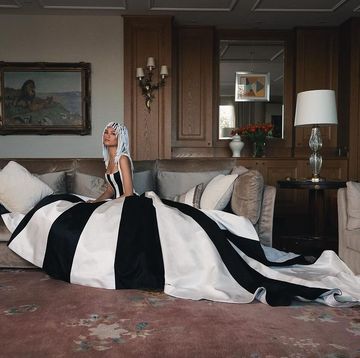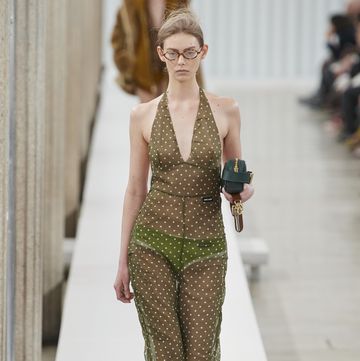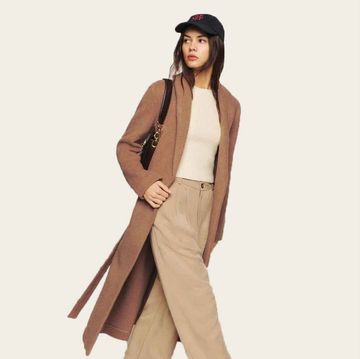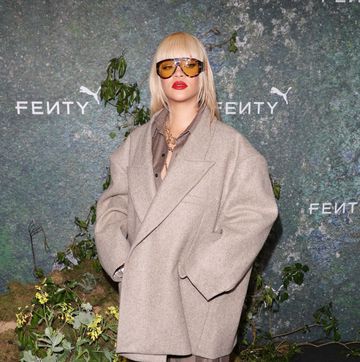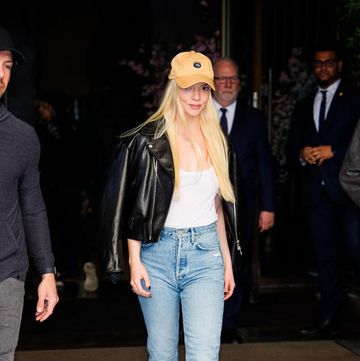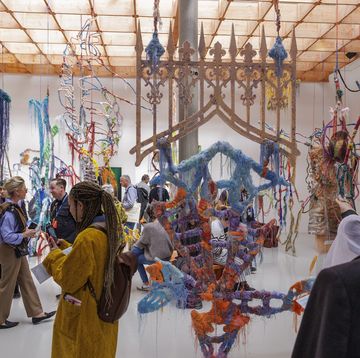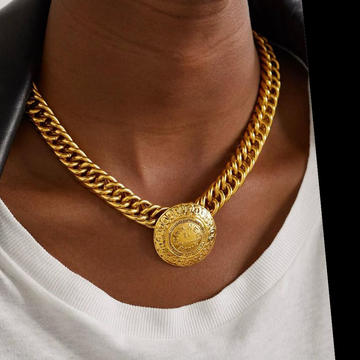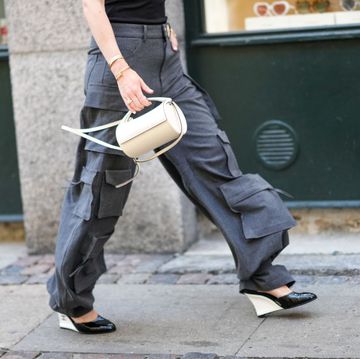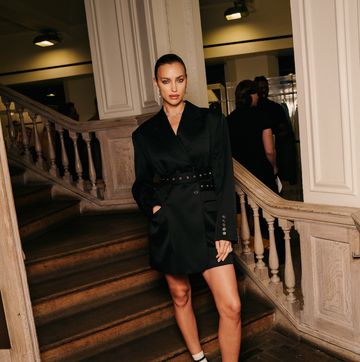By: Rebecca Lowthorpe Follow @Rebecca_ELLE
1. Prada 2. Moschino 3. Fendi
Digging inside the mind of is not an easy task. Her show staging, with musicians embedded in an orchestra pit, a woman who sang in German, a collection that compressed vivid colour, bold print, nylon and fur with subversively sexual dresses and ugly-beautiful shoes required answers. And so came the pilgrimage backstage and the usual shoulder-to-shoulder journalist jostling, ramming our iPhone microphones under Miuccias nose. A four minute and 20 second interview later, followed by an hour on Google and I can tell you what the influences were behind her latest collection.
It was called Act 2 because of her ongoing obsession with a moment of culture made in Germany. She had been watching films like Rainer Werner Fassbinders 1983 Berlin Alexanderplatz based on the influential 1929 Alfred Doblin novel of the same name set in the Weimar Republic era, between 1918 and 1933, when Germany was considered most advanced in science, technology, literature, philosophy and art. The singer on stage? Not a singer but the 64-year-old, award-winning German actress Barbara Sukowa, who starred in Fassbinders movie. The music? All originally composed in the Weimar era and rearranged for the Prada show.
Of course, when you do fashion, its not that you transfer, but its something you have in your mind. You dont know how the clothes will come out and how they will be reflected, said Prada, adding, But it was high and low, sophisticated and slightly vulgar. The vivid fur that edged the seams, collars and pockets of bright big-shouldered nylon coats was fake. The awkward transparent tube dresses that hung from shiny leather pinafore straps over a brightly printed pair of pants were intentionally sexual.
Its about humanity, about people and their feelings and emotions and I wanted to try to translate that kind of thinking behind that period. That period being a mash up of the 1930s seen through the 1980s, then blended through Pradas inimitable eye. She said: I really went bold because I really like those things how it is related to clothes, I really dont know. Or put it this way: those irreverent power-coloured coats and jackets were magnificent. The slippery satin dresses worn with a simple silk scarf at the neck whispered easy luxury. And the shoes (high blocky heels) and bags (with heavy chain straps) will sell up a storm. Asked if she was making politics with her clothes this season, she simply replied: I dont want to do politics with fashion, I want to reflect on life.
1. Prada 2. Moschino 3. Fendi
Life with Jeremy Scott, whose debut show for took place last night, could not be more different. How would the self-proclaimed American farm boy from the Mid West fair at the house that the late Franco Moschino built and dedicated to poking fun at the fashion establishment. Behind the scenes before the show, Scott explained his influences: First, he wanted to focus on the tailoring history of the house, so he looked to the colour palette of McDonalds, took the golden arches of M and plastered them on sweatshirts and bags: Fast fashion in its truest form, he said. Bags resembled a Happy Meal, Milkshake and French Fries.
Next up, he took the streetwear element of Moschinos history and played with thick gold chains: think Mr T-style bling with plenty of name-checking of the brand, set to 1990s rap and attitude a long fur coat read on the back: Fur Real. Then came Sponge Bob yes, the cartoon character rendered in fur jackets, knit dresses and leather bags. The finale, he said, was all about going to the opera, La Scala in Milan, bringing in the glamorous couture element of the brand. He took food and candy packages Tutti Frutti, Gummy Bears, popcorn and printed them large on voluminous dresses. Then came the bride in a white gown printed with black letters what did those words say? It was the nutritional contents from said packaging. Because the last thing a bride wants to wear on her wedding day is fat content, laughed Scott. Asked what the one word he would use to describe Franco Moschino? He said: Humour. Sadly, the audience wasnt laughing one bit as they had to wait 55 minutes for Katy Perry to turn up so that the show could start.
What were those alien space crafts hovering over our heads at ? Turns out they were four camera drones transmitting the scene live on Fendi.com the first of their kind to ever capture a catwalk show. That must be why Cara Delevingne held out her 'bag bug' so prominently in a white-gloved hand, so it could be filmed more easily from the air. It was a furry replica of Karl Lagerfeld, Fendis designer - complete with high-necked collar, tie and shades - although the hirsute mini-me looked more like a baby penguin. The collections catchphrase was brutal, poetic and pure.
As befitting a luxury fashion brand well known for its use of fur, barely an outfit passed by without a tuft of mink, fox or beaver. It sprouted from the shoulder of a sculpted black dress, or from the hips, thighs and knees of a chocolate wool dress inlayed with panels of black mesh. That was the story here Lagerfelds patchworking of future and heritage via military colours, painted camouflage prints, and shaved mink perforated sportswear.

